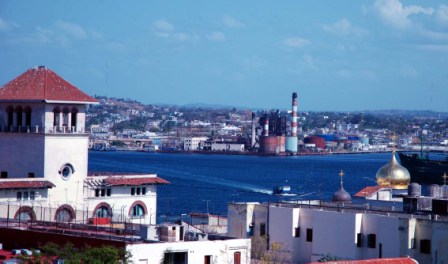Russian Culture and Me
Armando Chaguaceda

Now that Havana’s annual International Book Fair seems to have brought Slavic fashion back to Cuba, I wanted to devote a chronicle to the influence that Russian culture had in my childhood and adolescence.
I refer to it as “bola,” because we Cubans used that epithet (a mixture of the western feeling of superiority and the affection of siblings) to denote everything that came from the now extinct Soviet Union; this included art, machinery, consumer goods and people who we perceived to be rough and tough, frank and forthright, or generous and violent.
For years it’s been common in our homeland to scorn everything that reminds us of the former socialist camp, especially the USSR. This has been the inverse replica of the adoration —spontaneous or planned— that was practiced in Cuba for three decades.
My friend Mario Castle recalled with enormous sincerity that he (a working-class guy from the tough Marianao neighborhood) used to get emotionally moved by the images of Soviet childhood happiness… which made us all yearn for snow, sing the Cubanized version of the Young Pioneer hymn Que siempre brille el Sol (May the Sun Always Shine) and dress in uniforms similar to young Muscovites. We were dazzled by the glamour of Misha the Bear (the socialist version of Mickey Mouse).
In my childhood, in addition to sharing those pleasures (perhaps a version of another cultural colonialism?), thanks to my dockworker grandfather I had the luck of becoming familiar with the ships that tied up at the harbor of my native Havana community of Regla.
Aboard one of these ships, the Chapáev, I learned the history of the Red Guards. They faced the czarist counter-revolution, devoted themselves to a cause very different from that of the agents of the Stalinist “Cheka”, stooping to monitoring and murdering their own allies. The ship’s captain, Pavel Petrov, became a friend of my family and brought us those liquored chocolates whose memory still leave me with a taste of nostalgia.
The beautiful Russian legends used to occupy a special place in my heart, along with Spartacus of my history classes and the Japanese robots from our recess-time war games in the 5th and 6th grades.
Ilya Muromets, Dobrinia Nikitich and Aliosha Popovich were the three knights who forged the young Slavic people that faced invaders from beyond Rus. Their cartoons and comics —from the hands of Soyuzmultfilm Studios and the magazine Misha— pleased us more than the other tearjerkers, which were slow and in a style less attractive than what we in Cuba called “muñes de palo” (stick cartoons). I watched them at six in the evening, often eating my favorite Russian meat, “Slava,” with that poor cow painted on the side of the can.
But not everything having to do with the “bolas” was rose color to me. In my adolescence, I suffered a not so pedagogic punishment for making fun of something Soviet in public and in an uninhibited way. I don’t remember what it was about, but I do remember that my mother grounded me for a week (“and I had to go directly from school to home, no playing and no cartoons,”) and she stuffed my room with educational books from the USSR’s own Progreso Publishers.
Fortunately, my genes were never that xenophobic and were quite rebellious. Though an absurdly strong rejection of everything Slavic could have developed within me, this didn’t happen. In the same way, the absence of my mom and dad in my early childhood didn’t cause “little Armando” to hate Central America for stealing them away for a libratory cause.
Awakening the sensations of love, I liked vacillating between an enchanting face (Brooke Shields) and the solemn declaration that I would have “a blond girlfriend from the German Democratic Republic.” Trusting in the “luminous future of socialism,” where Cubans would live like the East Germans, where they told us each family had have a car and summer house.
At the time, I couldn’t understand the environmental costs of an automobile society (though this was declared revolutionary), nor did I see the shadow of the Stasi behind the affable smiles of Erich Honecker, that amiable old fellow.
Back then, all of us seemed happy, we studied to be “a country of men of science,” and the frontier of paradise had four digits: 2000.
However, only eleven years before the change of the millennium, the skies (and consciousnesses) clouded over in our corner of the Caribbean. Suddenly, we had to assimilate that the story was not exactly as it had been narrated to us. But that will be the subject of the following chronicle.






This first part of Armando’s chronicle is engaging. We know the second part is going to have a sad ending, but it will nevertheless be irresistible.
A very tragic thing about the demise of the Soviet Union is that, on the one hand, it demonstrated the unworkability of the Marxist formula for socialist economics and, on the other, the world socialist movement did not examine this unworkability with a scientific frame of mind.
Unfortunately, the Cuban leadership maintained the traditional, unscientific cult-of-personality worship of Engels and Marx, and attributed the collapse of the S.U. not to their theoretical errors, but to the bad character of more modern leaders. This has left brave Cuba headed in the same dead-end economic direction.
Perhaps Armando’s second chronicle will have some glimmer of hope. Perhaps there will be some sense of the cooperative direction in which Cuban socialist reform must go, if socialist is to correct itself & survive.